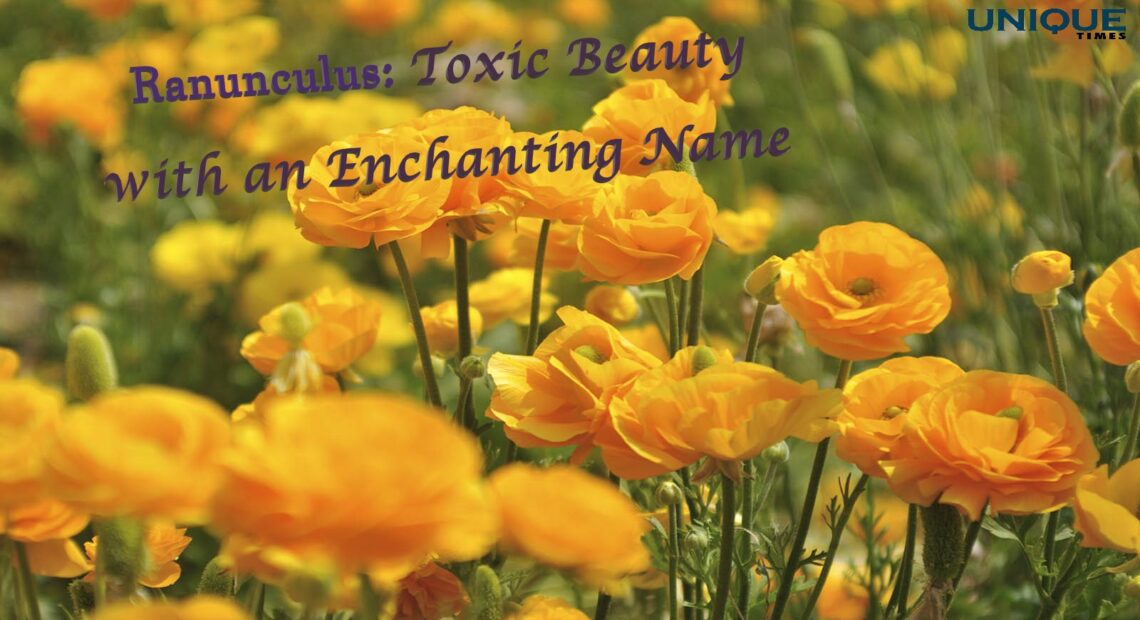Ranunculus: A Toxic Beauty with a Doozy of a Name

In the realm of flora, the Ranunculus, commonly known as “Buttercups,” stands out as a breathtakingly beautiful yet potentially dangerous flower. Its vibrant petals and intricate design make it a popular choice for ornamental gardens and bouquets, but beneath its alluring appearance lies a toxic secret. In this blog, we will delve into the fascinating world of the Ranunculus, exploring its mesmerizing attributes, its toxic properties, and the story behind its intriguing name.
- The Enchanting Beauty of Ranunculus: Ranunculus flowers are truly a sight to behold. With their symmetrical, multi-layered petals and a diverse color palette ranging from pure white to radiant yellows, oranges, pinks, and reds, they effortlessly captivate the beholder. Their beauty is undeniable, but there is more to these flowers than meets the eye.
- A Dangerous Secret: The Toxic Nature of Ranunculus: Beneath its charming exterior, the Ranunculus harbors a hidden danger. These flowers contain toxic compounds, including ranunculin and protoanemonin, which can cause skin irritation, blisters, and even more severe reactions if ingested. As such, caution is necessary when handling these flowers, especially for individuals with sensitive skin or curious pets.
- The Story Behind the Name: The name “Ranunculus” might sound exotic and mysterious, and there is a reason for that. The name itself has Latin origins, derived from “rana,” which means “frog.” This name was given to the flower due to its natural habitat, often found in damp, marshy areas where frogs are commonly seen. We’ll explore the historical significance of this name and how it has evolved over time.
- Cultivating Ranunculus: Tips and Tricks: Despite its toxicity, many gardeners and flower enthusiasts choose to cultivate Ranunculus for its unparalleled beauty. We’ll provide some valuable tips and tricks on how to grow and care for these delicate flowers, ensuring a successful and rewarding gardening experience.
- Symbolism and Uses in Different Cultures: Like many flowers, Ranunculus has its share of symbolism and significance in various cultures. We’ll explore how different societies have interpreted and used these flowers throughout history, shedding light on their cultural importance.
Ranunculus is undoubtedly a toxic beauty with a captivating name. Its allure may tempt gardeners and floral enthusiasts, but it demands careful handling and respect for its toxic nature. Understanding the intriguing history behind its name and appreciating its beauty while exercising caution can make the experience of encountering Ranunculus all the more enchanting.
Picture Courtesy: Google/images are subject to copyright








